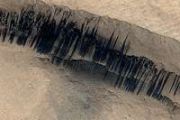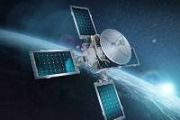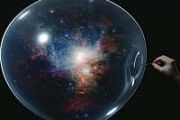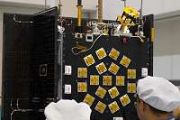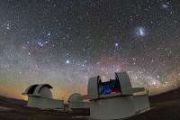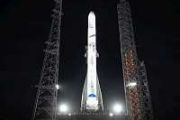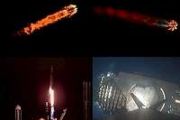
Copernical Team
New black hole images reveal a glowing, fluffy ring and a high-speed jet
 Boston MA (SPX) Apr 27, 2023
In 2017, astronomers captured the first image of a black hole by coordinating radio dishes around the world to act as a single, planet-sized telescope. The synchronized network, known collectively as the Event Horizon Telescope (EHT), focused in on M87*, the black hole at the center of the nearby Messier 87 galaxy. The telescope's laser-focused resolution revealed a
Boston MA (SPX) Apr 27, 2023
In 2017, astronomers captured the first image of a black hole by coordinating radio dishes around the world to act as a single, planet-sized telescope. The synchronized network, known collectively as the Event Horizon Telescope (EHT), focused in on M87*, the black hole at the center of the nearby Messier 87 galaxy. The telescope's laser-focused resolution revealed a Juice's first taste of science from space
 ESA's Jupiter Icy Moons Explorer, Juice, has recorded magnetic field data as its 10.6 m-long magnetometer boom deployed.
Juice launched on 14 April, with deployments and activation of its antennas, booms, sensors and instruments ongoing over the next months in a dedicated check-out period known as the commissioning phase.
The Juice magnetometer boom (J-MAG) was deployed on 21 April,
ESA's Jupiter Icy Moons Explorer, Juice, has recorded magnetic field data as its 10.6 m-long magnetometer boom deployed.
Juice launched on 14 April, with deployments and activation of its antennas, booms, sensors and instruments ongoing over the next months in a dedicated check-out period known as the commissioning phase.
The Juice magnetometer boom (J-MAG) was deployed on 21 April, Sols 3812-3813: Tiny Sticks Poking Out at Us
 I am 'shadow' Geo science team lead (GeoSTL) today, helping a new colleague to learn the details of the role. It's so amazing that we train the next generation, in year 11 of our mission. I still remember my own training, as I wasn't part of the initial cohort of GeoSTLs.
Inspired by watching my colleague doing a great job, I went back through my notebook, and found out that one of the ear
I am 'shadow' Geo science team lead (GeoSTL) today, helping a new colleague to learn the details of the role. It's so amazing that we train the next generation, in year 11 of our mission. I still remember my own training, as I wasn't part of the initial cohort of GeoSTLs.
Inspired by watching my colleague doing a great job, I went back through my notebook, and found out that one of the ear New findings indicate gene-edited rice might survive in Martian soil
 Andy Weir's bestselling 2011 book, The Martian, features botanist Mark Watney's efforts to grow food on Mars after he becomes stranded there. While Watney's initial efforts focus on growing potatoes, new research presented at the 54th Lunar and Planetary Science Conference by a team of interdisciplinary researchers from the U of A suggests future Martian botanists like Watney may have a better o
Andy Weir's bestselling 2011 book, The Martian, features botanist Mark Watney's efforts to grow food on Mars after he becomes stranded there. While Watney's initial efforts focus on growing potatoes, new research presented at the 54th Lunar and Planetary Science Conference by a team of interdisciplinary researchers from the U of A suggests future Martian botanists like Watney may have a better o Creating new and better drugs with protein crystal growth experiments on the ISS
 For more than two decades, the International Space Station has provided a platform for growing and studying protein crystals. In the early days of microgravity research, scientists discovered that they protein crystals grown in space were more uniform and larger than those grown in Earth's gravity. Since then, drug companies and academic researchers have conducted hundreds of protein crystal gro
For more than two decades, the International Space Station has provided a platform for growing and studying protein crystals. In the early days of microgravity research, scientists discovered that they protein crystals grown in space were more uniform and larger than those grown in Earth's gravity. Since then, drug companies and academic researchers have conducted hundreds of protein crystal gro Out of gas in orbit? This US space company is here to help
 The US company Orbit Fab is aiming to produce the go-to "gas stations" in space, its CEO tells AFP, hoping its refueling technology will make the surging satellite industry more sustainable - and profitable.
The solar panels typically attached to satellites can generate energy for their onboard systems such as cameras and radios, but can't help the orbiting objects adjust their positions, e
The US company Orbit Fab is aiming to produce the go-to "gas stations" in space, its CEO tells AFP, hoping its refueling technology will make the surging satellite industry more sustainable - and profitable.
The solar panels typically attached to satellites can generate energy for their onboard systems such as cameras and radios, but can't help the orbiting objects adjust their positions, e SpaceX aborts Starlink launch at last second, delays Falcon Heavy mission
 The SpaceX Starlink mission to send 46 Internet communications satellites into low Earth orbit was delayed again on Wednesday and will try again on Thursday.
The first attempt was scrubbed Tuesday morning just before the latest attempt on Wednesday from the Vandenberg Space Station in California on a reusable Falcon 9 rocket.
"Standing down from today's Falcon 9 launch of Starlin
The SpaceX Starlink mission to send 46 Internet communications satellites into low Earth orbit was delayed again on Wednesday and will try again on Thursday.
The first attempt was scrubbed Tuesday morning just before the latest attempt on Wednesday from the Vandenberg Space Station in California on a reusable Falcon 9 rocket.
"Standing down from today's Falcon 9 launch of Starlin Voyager will do more science with new power strategy
 Launched in 1977, the Voyager 2 spacecraft is more than 12 billion miles (20 billion kilometers) from Earth, using five science instruments to study interstellar space. To help keep those instruments operating despite a diminishing power supply, the aging spacecraft has begun using a small reservoir of backup power set aside as part of an onboard safety mechanism. The move will enable the missio
Launched in 1977, the Voyager 2 spacecraft is more than 12 billion miles (20 billion kilometers) from Earth, using five science instruments to study interstellar space. To help keep those instruments operating despite a diminishing power supply, the aging spacecraft has begun using a small reservoir of backup power set aside as part of an onboard safety mechanism. The move will enable the missio Framework for NASA's Roman spacecraft moves to Goddard clean room
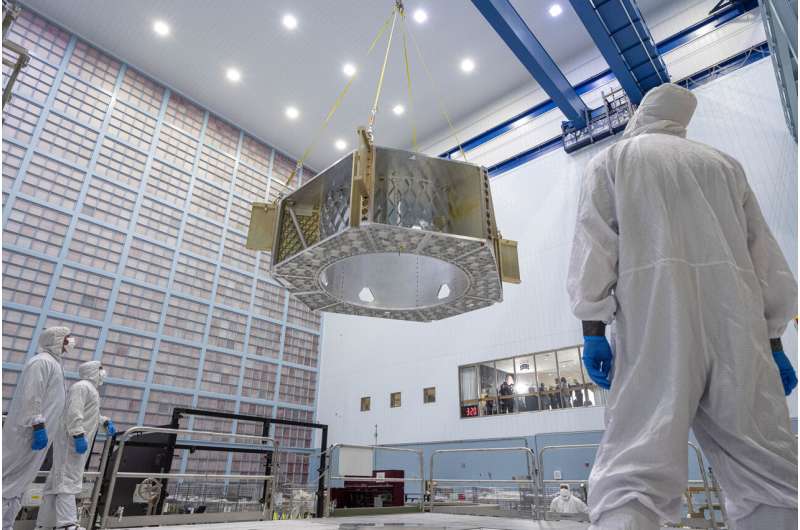
Research helps pave way for first manned mission to Mars
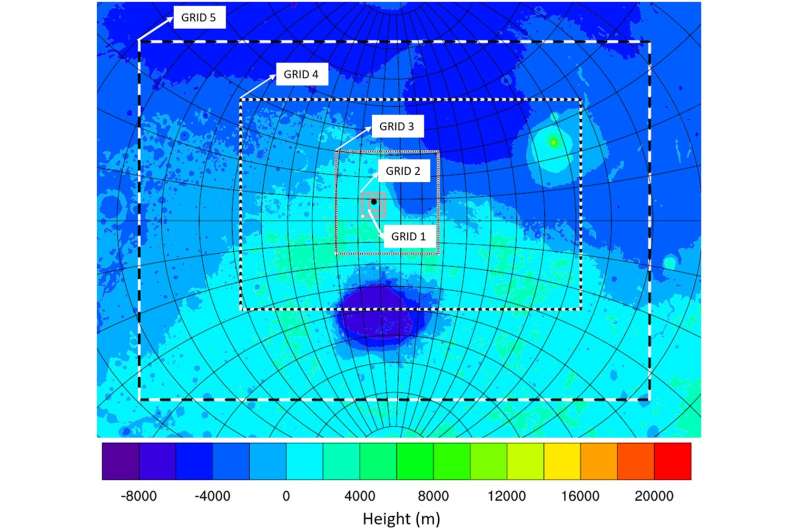
Scientists have greater insight into the atmospheric conditions on Mars than ever before following an international research project involving the University of Huddersfield. The findings of the project will help them identify safe landing sites with increased accuracy, and further paves the way for the first manned mission to the red planet.
One of the researchers on the project is Dr. Thomas Smyth, a Senior Lecturer in Physical Geography within the Department of Biological and Geographical Sciences in the School of Applied Sciences.
Alongside researchers from Ulster University, California Institute for Technology (Caltech) and the University of Wisconsin Madison in the U.S., the research has discovered a more informed and realistic Computational Fluid Dynamics (CFD) microscale modeling method, which will provide more detailed insight into the surface wind forcing of aeolian transport patterns on Martian surfaces such as dunes.














